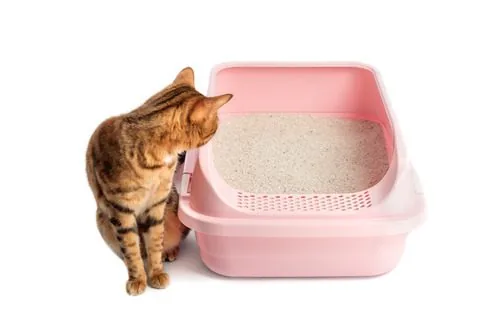Is Your Cat Pooping Outside the Litterbox? Here are Reasons Why and Solutions to Stop this Behavior
Cats are known for their cleanliness, making it puzzling and often frustrating when they start avoiding their litterbox for bathroom breaks. If you’ve noticed your cat displaying this behavior, it’s natural to feel concerned. This guide, brought to you by Warrick Veterinary Clinic in Warrick County, IN, explores the reasons behind this issue and offers solutions to help your cat return to better habits. Understanding the root of the problem is the first step to solving it, so let’s dive into the common causes and what you can do to address them. If you’re worried about your cat’s health or behavior, don’t hesitate to call us at (812) 897-4855 for advice and support.

Health Issues That Could Be Affecting Your Cat
Health concerns can often lead to a cat pooping outside the litterbox. It’s essential to rule out any underlying medical conditions that could be causing discomfort or stress to your pet.
- Digestive Problems: Issues like constipation, diarrhea, or other gastrointestinal distress can make the litterbox a place of discomfort for your cat. These conditions may make it difficult for your cat to get to the litterbox in time or associate the box with pain.
- Mobility Issues: Arthritis or other mobility problems can make it hard for your cat to climb into the litterbox, especially if the sides are high. As cats age, they may struggle with movements they once found easy.
- Urinary Tract Infections (UTIs): While more commonly associated with urination issues, UTIs can also lead to litterbox aversion due to the discomfort of trying to relieve themselves.
If you suspect any health issues, it’s crucial to contact Warrick Veterinary Clinic for a check-up. Early detection and treatment can help your cat feel better and may resolve the litterbox avoidance.
Behavioral Reasons and Environmental Stress
Sometimes, the issue isn’t physical but emotional. Stress, anxiety, and changes in the home environment can also significantly impact your cat’s behavior.
- Stress and Anxiety: Just like people, cats can feel stressed. Changes in your home, a new pet, or even rearranging furniture can upset your cat. A stressed cat might avoid the litterbox as a form of expressing their unease.
- Litterbox Aversion: The litterbox itself might be the problem. It could be too small, located in a noisy area, or not cleaned often enough. Cats are particular about their bathroom environment, and any of these factors could cause them to look elsewhere.
Creating a calm, stable home environment and ensuring the litterbox is inviting and clean are key steps to encouraging your cat to use it again. Regular cleaning, using unscented litter, and placing the box in a quiet, accessible location can make a big difference.
Solutions to Encourage Proper Litterbox Use
Understanding the reasons behind litterbox avoidance is crucial, but knowing how to address the issue is equally important. Here are some strategies to encourage your cat to start using the litterbox again:
- Having more than one litterbox, especially in a multi-level home, can make it easier for your cat to reach a box in time. This is particularly helpful for older cats or those with mobility issues.
- Ensure the litterbox is large enough for your cat to move around comfortably. If your cat is older or has mobility issues, consider a box with lower sides for easier access.
- Keep the litterbox clean by scooping it daily and changing the litter regularly. A clean box is much more inviting to a cat.
- Look for ways to reduce stress in your cat’s environment. This could include providing hiding places, toys, and regular playtime to help them feel secure and engaged.
When to Seek Help
If you’ve tried these solutions and your cat is still avoiding the litterbox, it might be time to call for professional help. Warrick Veterinary Clinic is here to support you and your pet. Our team can offer advice, conduct health checks, and even suggest behavior modification techniques to help resolve the issue. Don’t let the problem persist—help is just a phone call away at (812) 897-4855.
Contact Warrick Veterinary Clinic Today
Addressing litterbox issues can be challenging, but with patience and the right approach, you can help your cat overcome this behavior. Remember, every cat is unique, so what works for one may not work for another. It’s all about understanding your cat’s needs and adjusting your strategy accordingly. The health and happiness of your cat are our top priorities at Warrick Veterinary Clinic. If you’re concerned about your cat’s behavior or health, please don’t hesitate to reach out to us.
